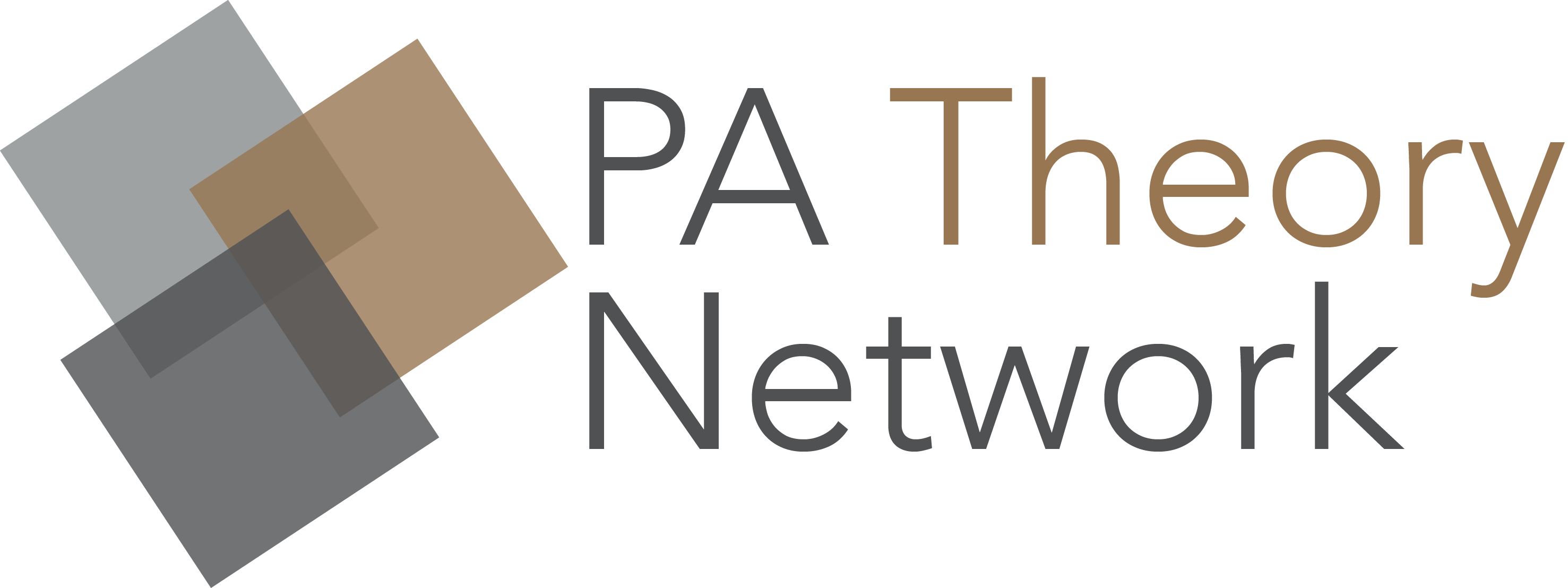History of the Network
The Network formed on May 4, 1978 in response to the lack of a common space affording like-minded academics a place to discuss theoretical ideas in the field of public administration. At that time, such dialogue fell outside of the mainstream focus of significant journals and conferences and the origins of the Network rest in the effort to address this issue. The name, “Public Administration Theory Network” was coined by Guy Adams in a letter detailing just what was needed. Adams assumed an informal role of a coordinator, and crafted an informal series of discussions via the newsletter Dialogue that would grow to include an annual conference, journal, and fellows program for developing new theorists. The “coordinator” role would continue, though responsibilities between journal editor and coordinator would come to be divided into two roles. (Previous coordinators of the Network include Gary Marshall and Eric Austin.)
Though ATP had been largely self-published since its founding by Jon Jun; (more on this later) and under Jun and, then, Richard Box the journal gradually became more professionalized. With time, it no longer was really an informal outlet to exchange ideas but a fully-fledged peer reviewed journal with a fledging international reputation. Yet the journal was, in essence, still self-published with considerable manual labor required to copy edit and distribute the journal. The world of the academy was also changing and faculty were coming under increasing pressure to publish more and in high quality outlets; and to become ever more “entrepreneurial” in their academic work. The world also had gone digital with students and faculty accessing journals electronically rather than in print. In short, the previous model of publishing the journal needed to be updated.
In 2008, Thomas Catlaw (as editor) and Angela Eikenberry (as managing editor) were selected as part of a team to edit ATP. They made contracting with a commercial publisher a key element in their plans for the journal. As they saw it, this would free the editorial team from basic copyediting and formatting tasks, provide resources for electronic distribution and marketing, and, in time, raise the visibility of the journal. As Catlaw and Eikenberry sought a publisher, questions arose. The Network was an informal group. Did it own the journal? Could it enter into contracts? Could it collect royalties? Where would the money go?
At the same time, similar issues were complicating the management of the conference. University accounting officers grew leery of interacting with such an informal entity. Whereas universities once had been willing to act as “fiscal agents” on our behalf in the past, they now were reluctant to deal with an entity that did not have a bank account or a Tax Payer ID. It became hard to advance the aims of the journal and the Network in the face of such challenges.
Catlaw and Eikenberry pressed ahead with finding a commercial publisher, ultimately partnering with long-time friend of the Network and publisher of many Network authors, Harry Briggs, at M.E. Sharpe. The first ATP published by M.E. Sharpe was the March 2009 edition. (M.E. Sharpe would be sold to Taylor & Francis during the editorship of Larry Luton. T&F remains the publishers of the journal.) Parallel with this, a committee was formed and led by the then-coordinator of the Network, Eric Austin, to incorporate the Network as a nonprofit membership organization in Montana (Austin was on the faculty of Montana State University). An interim Board was named to draft bylaws and get an organization up and running.
This was, for some, a somewhat bittersweet moment. While the membership recognized and voted in favor of incorporation in the face of the real challenges we faced, many understandably lamented the “end of an era.” Yet throughout those discussions there persisted the important, even noble, idea of trying to maintain the Network’s open, informal, and democratic ethos while struggling with the demands of organizational formality and the contemporary university. This continues to be part of the Network’s culture.
